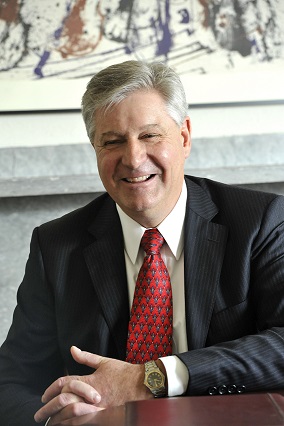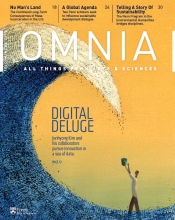
Steven J. Fluharty, Dean and Thomas S. Gates, Jr. Professor of Psychology, Pharmacology, and Neuroscience
Photo credit: Candace DiCarlo
An international perspective is one of the strengths that define what we do at Penn Arts and Sciences. I was reminded of this while in China earlier this fall to join President Gutmann, Penn alumni, fellow deans, and Chinese officials and academics to celebrate the Penn Wharton China Center and our expanding engagement with China.
The festivities included the announcement of the first recipients of the Penn China Research and Engagement Fund awards. Of the 16 projects that Penn is funding, five are led by Arts and Sciences faculty. These ambitious projects will examine questions ranging from linguistic diversity to China’s role in global economic history.
The wide variety of perspectives that Arts and Sciences faculty are able to bring to the University’s engagement with China comes as no surprise. As we noted in our strategic plan, Foundations and Frontiers, the international emphasis of the School is reflected in the very names of a large portion of our departments, majors, and research centers, and our faculty are deeply engaged in research initiatives all over the world. A brief sampling of the research interests of the 24 faculty who joined Penn Arts and Sciences this fall reflects the depth and breadth of our international engagement: environmental anthropology with a focus on South Asia; the political economy of transition in Central and Eastern Europe; Japanese thought, religion, and popular culture; health and healing in Africa; and transnational art in global Latino cities, from New York to Buenos Aires, are just a few highlights.
International perspectives expand the horizons of our undergraduates as well. Short-term, immersive experiences abroad, like the Penn-in-Cannes program featured in this magazine (pg. 38), offer students unique learning opportunities. Every summer, students take part in service initiatives that bring them all around the globe—including more than 20 students who engage across India through our Center for the Advanced Study of India’s long-running internship program. In addition, the College’s foreign language and cross-cultural analysis requirements ensure that all our students encounter the rich diversity of cultures beyond the U.S.
Finally we have the international community that makes up our campus. A total of 153 students in the College Class of 2019, making up 10 percent of the class, are from countries outside the U.S. Many of our brightest undergraduate stars come to Penn from all over the world—students like last year’s Presidential Engagement Prize winner Shadrack Frimpong (C’15), who has now gone on to establish a girls’ school and community clinic in his poverty-stricken home village in Ghana; and Rutendo Chigora, who came to Penn from Zimbabwe and is now studying in Oxford as a Rhodes Scholar. Through our many academic programs, the international research efforts of faculty across the School, and students like Shadrack and Rutendo, Penn Arts and Sciences is increasingly committed to thinking—and acting—globally.



